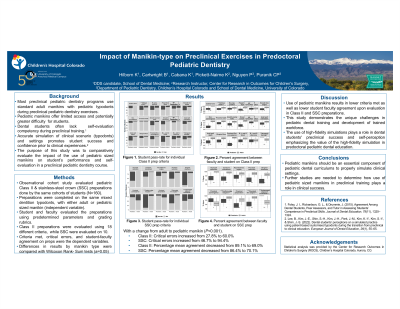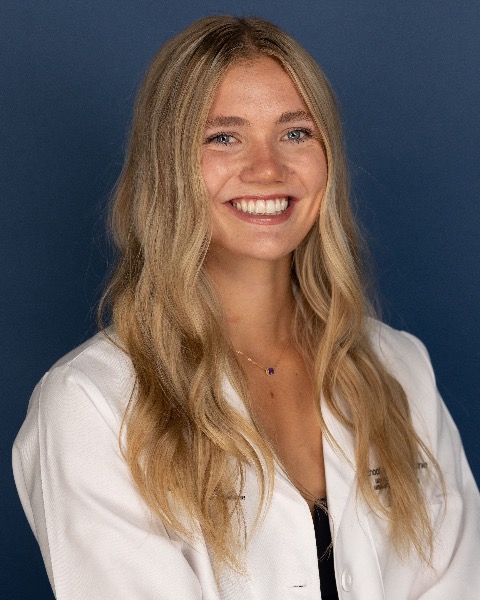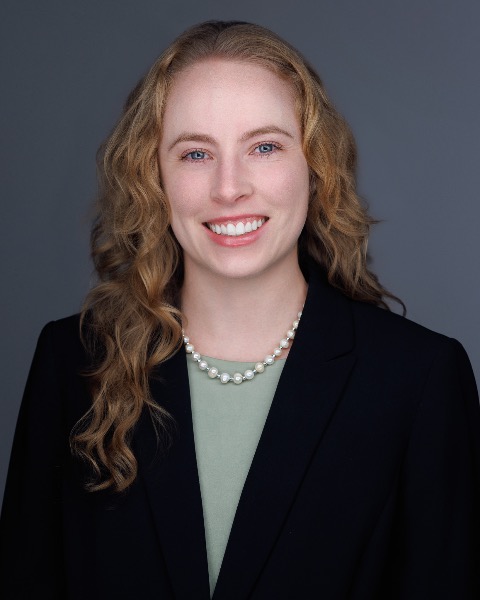Other
250 - Impact of Manikin-type on Preclinical Exercises in Predoctoral Pediatric Dentistry


Kamden Hilborn, DDS candidate
Student
University of Colorado
University of Colorado School of Dental Medicine
Clancy, Montana, United States- PN
Paloma Nguyen, D.M.D., M.S.D., Diplomate
University of Colorado School of Dental Medicine
Aurora, Colorado, United States 
Chaitanya P. Puranik, B.D.S., M.S., M.Dent.Sci., Ph. D. F.A.A.P.D., Diplomate (he/him/his)
Residency Program Director
Children's Hospital Colorado
Children's Hospital Colorado and School of Dental Medicine, University of Colorado Anschutz Medical Campus
Aurora, Colorado, United States- KC
Kelsey Cabana, DDS Candidate
University of Colorado School of Dental Medicine

Brianna Cartwright, DDS candidate
Dental Student
University of Colorado School of Dental Medicine
University of Colorado School of Dental Medicine- KP
Kaci Pickett-Nairne, MS
2Center for Research in Outcomes for Children's Surgery, Children's Hospital Colorado, University of Colorado School of Medicine

Chaitanya P. Puranik, B.D.S., M.S., M.Dent.Sci., Ph. D. F.A.A.P.D., Diplomate (he/him/his)
Residency Program Director
Children's Hospital Colorado
Children's Hospital Colorado and School of Dental Medicine, University of Colorado Anschutz Medical Campus
Aurora, Colorado, United States- PN
Paloma Nguyen, D.M.D., M.S.D., Diplomate
University of Colorado School of Dental Medicine
Aurora, Colorado, United States
Presenting Author(s)
Co-Author(s)
Research Mentor(s)
Program Director(s)
Purpose: Most preclinical pediatric dentistry programs use standard adult manikins with pediatric typodonts during preclinical pediatric dentistry exercises. In contrast to adult, pediatric manikins provide limited access for simulated pediatric restorative procedures. The purpose of this study was to comparatively evaluate the impact of manikin type on student’s performance and evaluation in a preclinical pediatric dentistry course.
Methods: This observational cohort study evaluated Class II tooth preparations and stainless-steel crowns (SSC) in a predoctoral pediatric dentistry course (N=160). Both preparations were performed with pediatric mixed dentition typodonts with two types of manikins: adult vs. pediatric (independent variable). Student and faculty graded performance using predetermined parameters and rubrics. Grading criteria (met vs. not met) and student-faculty agreement were the two dependent variables. Differences in results by manikin type were compared with Wilcoxon Rank-Sum tests (a=0.05).
Results: There were 18 and 10 evaluation parameters for Class II and SSC preparations, respectively. A higher proportion of students met all grading criteria for SSC and Class II with use of adult manikin as compared to pediatric manikin (P < .001). Conversely, a higher proportion of students had critical errors in their SSC and Class II preparations when pediatric manikins were used (P=.001). There was a statistically higher agreement between student-faculty evaluation for SSC and Class II when adult manikin was used as opposed to pediatric manikin (P < .001).
Conclusions: Limited access with pediatric manikins increased the challenges associated with preclinical pediatric dental exercises emphasizing the value of pediatric manikins in preclinical pediatric dental education.
Identify Supporting Agency and Grant Number:

.jpg)